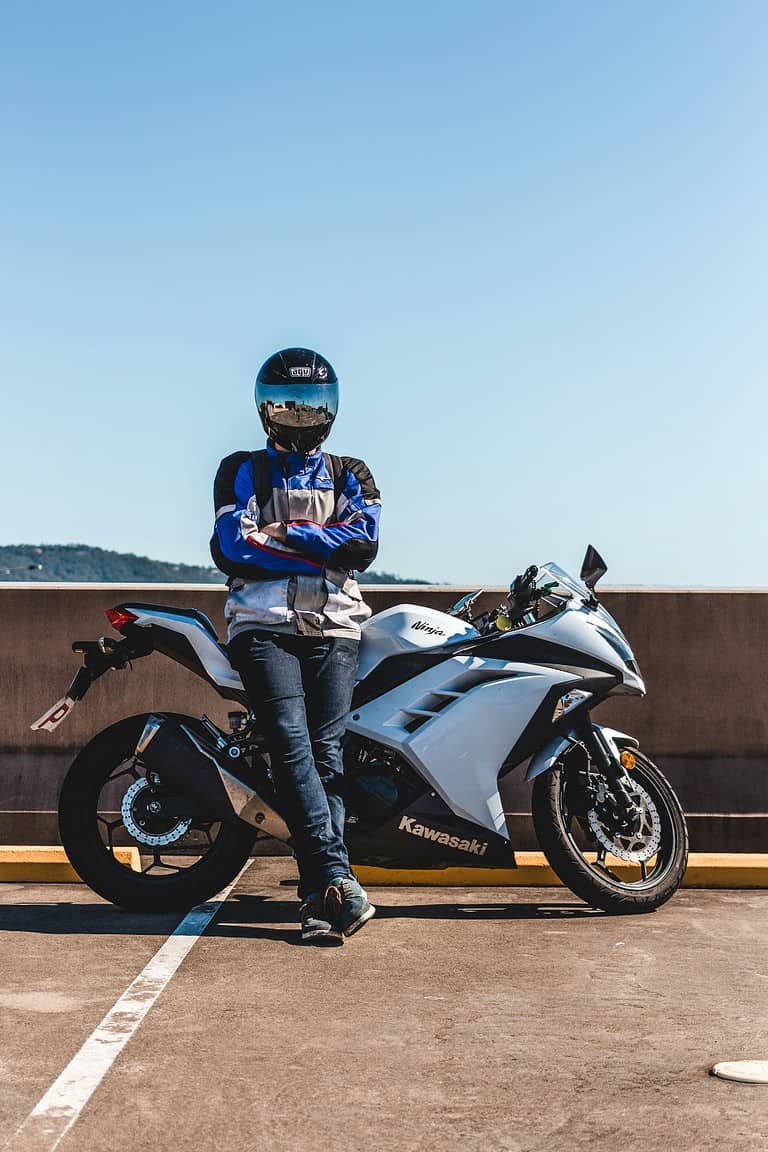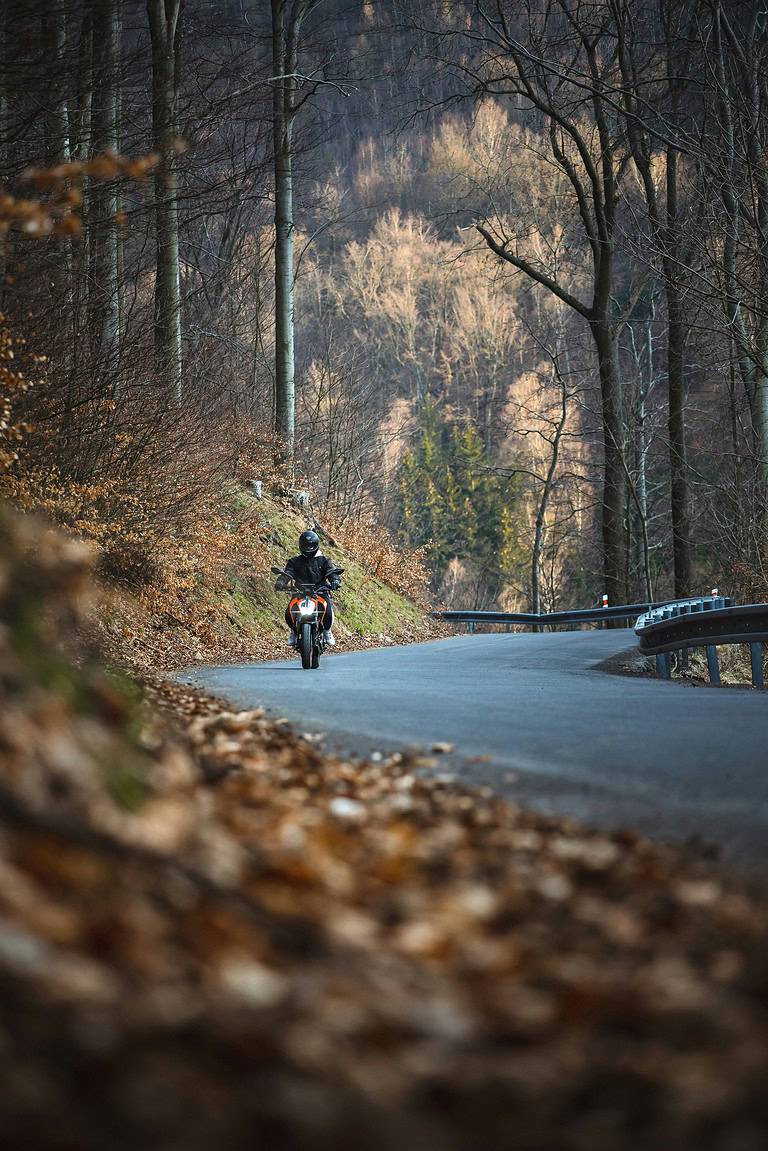How Much Does A Motorcycle Cost? (Buying Your First Bike in 2024)
It’s 2024 and summer is on the horizon and you’re sitting here thinking – maybe it’s finally time to buy the damn bike. There’s only one problem: the cost. How much does a motorcycle cost? What do you need to budget for? What’s reasonable to expect in 2024?
There may be some expenses you haven’t considered yet, from the gear involved to future recurring costs, such as insurance and maintenance.
Below, we’ll break down the costs involved in buying your first bike, and shed some light on some options for your first motorcycle.
Get ready to hit the road with some peace of mind on your new ride.
How Much Does a Motorcycle Cost?
The biggest variable for the cost of a motorcycle is going to be whether you choose to buy a new or used one. Regardless of your choice here, you can feel comfortable setting aside between $3,000 and $10,000 for the bike alone.
If you’re looking at a more entry-level motorcycle with a smaller engine size, that initial price tag is going to be towards the lower end of that range. Naturally, at a dealer, the sticker price is going to come with some additional costs, so put your negotiating hat on and see what you can get as far as an out-the-door price.
There are some other factors to consider, particularly within the used market:
- Age: A newer bike is going to cost more than an older model.
- Mileage: Lower miles typically will result in a lower cost. Watch out for significantly older models with very low miles – this means the motorcycle sat for a long time and wasn’t ridden very much.
- Style: A large tourer is going to cost a lot more than a small city cruiser. Your choice of bike should fit your initial mission (weekend cruising, commuting, off-road weekend warrior, etc.).
- Engine Size: Larger cc motorcycles are going to generally cost you more than a smaller engine. Keep in mind with a smaller engine, you will get better fuel efficiency.
New Motorcycle v. Used Motorcycle
For a new rider, we recommend getting a used motorcycle. Doing so means you’re on the hook for a much lower purchase price, and you don’t have to worry about extra hidden costs like sales tax or freight.
Newer riders are likely to drop their bike as they get more comfortable riding and maneuvering on two wheels, especially at slow speed, and having a used bike means you’ll shed fewer tears when it happens.
In case you were stressing; we’ve ALL dropped a bike at some point, and if anyone says otherwise they’re lying. Practicing slow-speed skills and pushing the boundaries of your skillset will almost inevitably end up in a drop. That said; you’ll be a better, more experienced rider as a result of the skills you regularly practice.
There is, of course, the chance that there might be a few minor maintenance items to take care of on a used bike, but your repair costs can be covered with the money you save buying used rather than new.
Bring a trusted friend along with you to test ride the bike if you haven’t yet learned how to ride, or aren’t comfortable heading out on your own yet. Better yet, bring a mechanic with you to check out the bike and make sure there won’t be any surprises as you ride off into the sunset, particularly if you’re not confident when it comes to understanding at least the basics.
If you have your heart set on a new motorcycle, take a look at last year’s models. Dealers are looking to clear the floor for the new bikes, so you can usually catch a break on the initial costs here. Negotiating for an out-the-door price will also help save money. The goal is to cash in, quite literally, on a lower sticker price where you can.

To sum it up:
Benefits of buying used motorcycles:
- Cheaper than a new bike; less up-front investment.
- May be able to get a bike you can grow into a bit (more bike for your money).
- Avoiding financing and paying interest.
- Already imperfect, so you don’t have to worry about drops.
Benefits of buying new motorcycles:
- Knowing the full history of the bike; no hidden surprises.
- Dealer support if you’re not mechanically inclined.
- Warranties available.
Different Types of Motorcycles
We’re not going to cover every single type of motorcycle out there in-depth, but it’s important to know that there are different types out there that result in differing levels of comfort and ergonomics, are completely different visually, and generally have a different overall riding experience.
Our recommendation is to go sit on a BUNCH of bikes. You may have your heart set on how something looks, only to realize that you hate how it feels.
Here’s a key tip from our experience: the latter is far more important.
Supersport
These are the bikes you’ll essentially see on the track but designed for the streets. A crouched leaned-over riding position, clip-on handlebars, and a thick rear tire are key visual components to look for. These bikes also have a full set of fairings, covering all the internal components.,
Upright Sport / Naked
Upright sports satisfy the need for speed with a much more comfortable riding position. These bikes are a lot more comfortable for longer rides than a supersport would be. They typically have a more torquey engine than the supersport category, but still with a thick rear tire and a lot of included tech. You will get a LOT more wind in the face with this style, but they are often easy to work on, with little-to-no fairings.
Cruiser
Defined by a laid-back riding position, big v-twin engines, and a very classic look. Generally heavier, both in the controls department and in general with weight. The biggest benefit here is the seat heights are typically quite low, and the throttle isn’t so punchy that you can easily get in over your head.
Cafe Racer
Great for an urban environment: not designed for long trips necessarily. Typically have a flatter seat and upright riding position, with little or no fairings for wind protection. Smaller engines are more favored in this category, but that’s not to say that there aren’t larger engines out there.

Adventure
Adventure bikes are taller bikes designed for the long haul on fire roads and entry-level off-road riding. Typically have significant fairings and may come stock with a crash cage, handguards, and large windscreen. The riding position is upright and the bike usually has knobbier tires stock. Tall seat heights may limit shorter riders here.
Touring
The perfect bike for the super long haul. These bikes will have a longer wheelbase, plenty of options for saddlebags and hard cases (if it doesn’t come stock already with those), are giant all around, and are not the most maneuverable or easy to learn on for a beginner rider.
Conclusion
So there you have it; the basic costs of a motorcycle. To get started, make sure you pack away at least $3,000, and the more you can stockpile above that, the better.
But as we mentioned, that initial cost isn’t everything – so let’s dive into the full cost of purchasing a motorcycle.
Total Cost of Owning a Motorcycle
That price you pay to grab your first set of wheels is not the only cost you need to consider. Here are a few other costs that you’ll encounter early on.
It’s Not Just the Cost of the Bike
Motorcycle ownership is going to carry a few more costs than just the bike, from riding gear to motorcycle insurance and motorcycle maintenance.
Riding Gear
A set of wheels isn’t complete without some protective gear. Whether you’re an experienced rider or not, gear is a wise investment to keep you safe (and avoid those medical costs).
And if you’re really trying to skimp on costs, at minimum go for a helmet and gloves.
A full set of gear could cost you $1,000-2,000 dollars, so make sure you budget for that. Here’s what that might include:
- Helmet
- Jacket (Leather or Textile)
- Gloves (Gauntlets for your first pair recommended)
- Riding Pants
- Boots or Riding Shoes
Motorcycle License and Riding Courses
If you’re brand new, we’d highly recommend an introductory riding course, like the BRC from the Motorcycle Safety Foundation. This will get you comfortable with the basic controls, introduce you to some slow-speed maneuvers, and in general, will help you get comfortable on the bike.
You will need a lot more practice beyond the course before you feel fully comfortable on the road, but it’s a great starting point.
Motorcycle Insurance Costs
Some states in the US don’t require motorcycle insurance (or only require liability) but we’d still recommend factoring it in. You’re pretty vulnerable out there, so we’ve always gotten as much coverage as we can to help protect us in the event of an accident.
Disclaimer: This is not formal insurance advice. We’d recommend talking to your insurance agent to help determine your specific needs and coverage.
Accessories
If you’re like us, the moment you buy the bike you’re looking for extra bits to be able to add on. It helps you feel like you’ve truly made the bike your own, and could be anything from a new exhaust to a phone mount.
While not a necessity, if this type of thing is important to you, set aside some cash to be able to add a few bits and bobs to your bike once you’ve brought it home.







